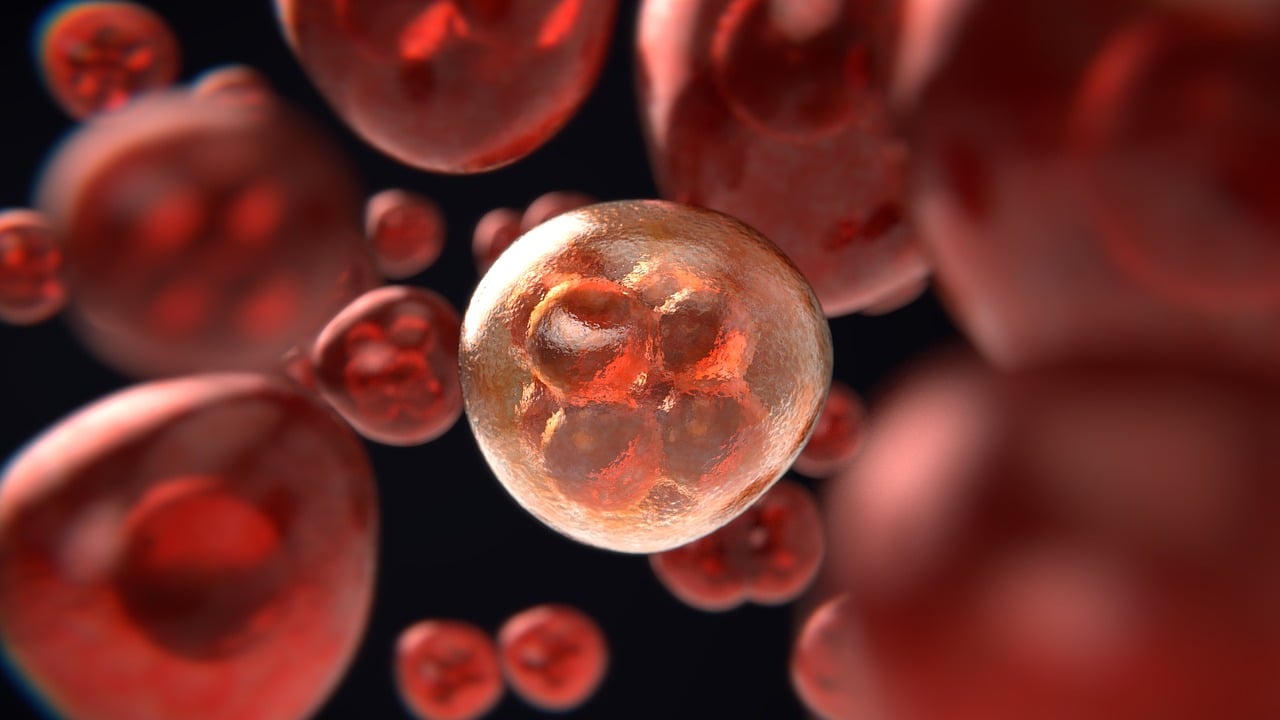Cancer Immunotherapy Novel Targets: The Forefront of Immuno-Oncology Research

The evolution of cancer therapy and its treatments is perpetually ongoing. The emergence of cancer immunotherapy novel targets is a significant game changer in the fight against malignancies. These new targets become particularly salient, opening avenues to potential treatments that are not only precisely tailored to the unique genetic makeup of the cancer cells but are also designed to work synergistically with the patient’s own immune system. This symbiosis between novel targets and the immune system heralds a beacon of hope, illuminating pathways toward more potent, efficient, and safer cancer treatments. It has become so important and crucial for the future of cancer treatment to discover novel targets, each propounding new strategies to leverage the body’s own defense mechanisms in identifying, attacking, and eradicating cancerous cells.
The Genesis of Cancer Immunotherapy
Cancer immunotherapy involves leveraging the immune system to recognise and combat cancer cells. In late 19th Century, Dr. William Coley, an American surgeon and often referred to as the “Father of Immunotherapy” made one of the earliest notable strides in cancer immunotherapy. His approach, known as Coley’s Toxins, involved injecting bacteria into cancer patients, starting in 1891, with the hope of stimulating their immune systems to attack the cancer. Coley observed tumour regression in some cases following bacterial infections, sparking his exploration in this direction.
Traditional therapies, like chemotherapy, directly target the malignant cells, often harming healthy cells in the process. Cancer immunotherapy, however, empowers the body's own immune system to identify and target cancer cells, minimising collateral damage.
Latest Developments in Cancer Immunotherapy Targets
While PD-1/PD-L1 and CTLA-4 have etched their significance as pivotal immune checkpoints, there is a significant intent on discovering and elucidating novel targets. These emerging interfaces within immune cells are providing promising arenas to explore alternative and potentially more effective therapeutic interventions.
LAG-3 (Lymphocyte-Activation Gene 3)
LAG-3, an immune checkpoint, is a protein that plays a quintessential role in regulating the immune system. It is predominantly expressed on the surface of T cells and is renowned for inhibiting their activation, thereby modulating immune responses.
- Blocking Mechanism: Leveraging the inhibitory nature of LAG-3, therapeutics are being developed to block its pathway. This blockade is believed to amplify T-cell response against cancer cells.
- Combination Therapy: Research is focusing on utilizing LAG-3 inhibitors in tandem with other checkpoint inhibitors, like anti-PD-1 therapies, to potentially enhance treatment efficacy.
Drugs like relatlimab (an anti-LAG-3 monoclonal antibody) are being investigated in clinical trials for their efficacy in treating melanoma, especially in combination with nivolumab, an anti-PD-1 therapy.
TIM-3 (T-cell Immunoglobulin and Mucin-domain containing-3)
TIM-3 is an immune checkpoint receptor expressed on various immune cells, including T cells and dendritic cells. This molecule is intriguing due to its ability to inhibit anti-tumour immune responses when engaged with its ligands, such as galectin-9.
- Regulating Immunity: The blockade of TIM-3 has emerged as a potential strategy to augment anti-tumour immune responses by preventing the exhaustion of T cells.
- Addressing Resistance: TIM-3 inhibition is also being explored to combat resistance to other immune checkpoint therapies.
Therapeutic antibodies targeting TIM-3, such as MBG453, are undergoing clinical trials, exploring their efficacy both as monotherapies and in combination with other immunotherapies, particularly in solid tumours and hematologic malignancies.
TIGIT (T-cell Immunoreceptor with Ig and ITIM Domains)
TIGIT is a co-inhibitory receptor expressed on the surface of various immune cells, including T cells and NK (Natural Killer) cells. TIGIT binding to its ligands, such as CD155, leads to the suppression of immune responses.
- Inhibitory Role: Blocking TIGIT has emerged as a strategy to enhance the immune response against cancer cells by preventing TIGIT-mediated inhibition of T and NK cells.
- Synergistic Approaches: TIGIT inhibitors are often studied in conjunction with other therapies, such as PD-1/PD-L1 inhibitors, to enhance anti-tumour activity. Computational drug discovery company Compugen, are currently investigating the ‘triple pathway hypothesis.’ This combines blocking TIGIT and PVRIG in the hopes that a third pathway, DNAM, can be activated for therapeutic effect.
Tiragolumab, an anti-TIGIT antibody, has entered clinical trials in combination with atezolizumab (an anti-PD-L1 therapy), exploring its potential in treating various cancers, including small cell lung cancer.
Novel Targets in Cancer Immunotherapy Clinical Trials
As discoveries in the field of cancer immunotherapy increase, scientists and researchers have shift their focus on novel immunotherapeutic targets, each echoing the potential to reshape therapeutic paradigms and improve treatments against cancer.
IDO1 Inhibitors
A salient example emerging from this research landscape is the exploration of IDO1 Inhibitors. Indoleamine 2,3-dioxygenase 1 (IDO1), an enzyme which permeates many tumour types, has catapulted to the forefront of immunotherapy research due to its pivotal role in orchestrating mechanisms that shield cancer cells from immunological assault. IDO1 catalyzes the degradation of tryptophan, an essential amino acid, into kynurenine. This process not only starves T cells of the crucial nutrient but also creates a local immunosuppressive microenvironment that enables tumours to skillfully elude immune detection and attack. Clinical trials have been unfurled to scrupulously evaluate the efficacy and safety of IDO1 inhibitors, with scientists investigating their potential as standalone agents and in synergy with other immunotherapeutic strategies, revealing a promising avenue for thwarting the immunoevasive tactics deployed by tumour cells.
VISTA
Concurrently, the immunological checkpoint regulator VISTA (V-domain Ig suppressor of T cell activation) has ascended as a notable contender in the arena of cancer immunotherapy research. VISTA, colloquially identified as PD-1H, supress T cell activation, thereby using the immune response against tumours. Unlike the more well-known PD-1/PD-L1 axis, VISTA functions independently of the adaptive immune resistance, establishing it as a compelling target, particularly for cancers that may not be responsive to PD-1/PD-L1 inhibitors. Drugs designed to inhibit VISTA are currently being meticulously evaluated in phase I and II clinical trials, with researchers investigating their efficacy not only in inciting an anti-tumour immune response but also in potentially reviving and augmenting the efficacy of existing immunotherapeutic modalities.
Cancer immunotherapy not only underscore the potential of novel targets but also highlight the complexities and intricacies intertwined within the biological mechanisms of tumours and the immune system. The IDO1 inhibitors and VISTA blockade represent just the tip of the iceberg, with many targets and strategies being investigated across the globe, each echoing the potential to herald a new dawn in the battle against cancer.
Conclusion
The future of cancer immunotherapy novel targets and immunotherapy in general as a pillar for cancer treatment shines with promising prospects. This revolutionary approach has already demonstrated remarkable success stories in combating various forms of cancer, potentially heralding a new era in oncology. Its ability to harness the body's own immune system to fight malignant cells not only provides an alternative pathway for treatment but also opens doors to more personalised and targeted therapeutic strategies. As research evolves, it’s conceivable that immunotherapy will be finely tuned to optimise efficacy and minimise side effects, gradually becoming a standard, perhaps even predominant, method in cancer management. Furthermore, the amalgamation of immunotherapy with other treatments might redefine cancer care, enabling the development of more holistic and multi-faceted treatment regimens, ultimately improving patient outcomes and quality of life. As science and technology advance, the coming decades are anticipated to unveil further innovations, solidifying immunotherapy’s place in the future of cancer treatment.







